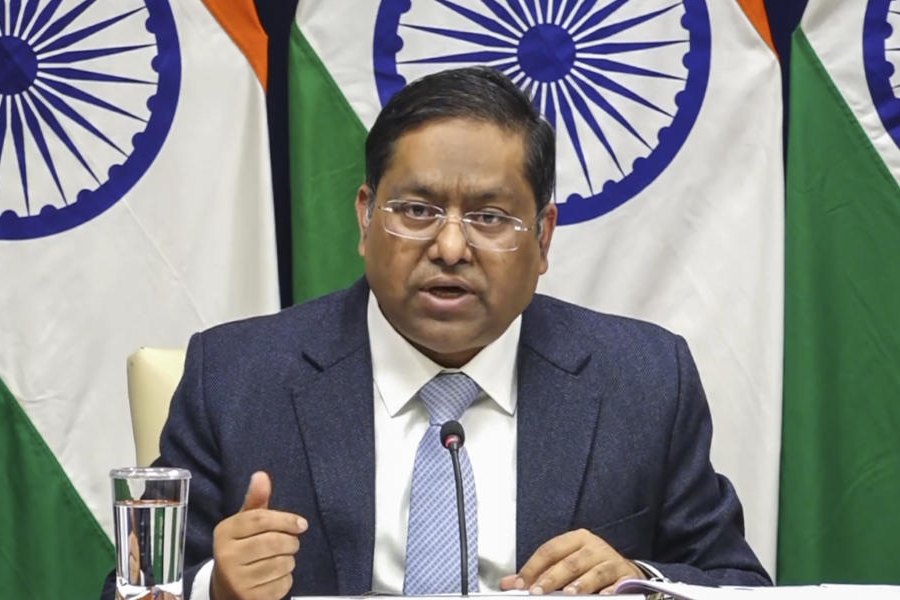 Saturday, 04 January 2025
Saturday, 04 January 2025
 Saturday, 04 January 2025
Saturday, 04 January 2025
Raghavasimhan Sankaranarayanan, a doctoral student in music technology at Georgia Tech in Atlanta, has created a robot violinist, in collaboration with his advisor Dr. Gil Weinberg, capable of mastering the intricacies of Carnatic music.
The robot has already performed in expos and demos, interacting with musicians in real time.
“It’s like a duet partner,” Raghavasimhan tells The Telegraph Online. “It listens, learns, and sometimes surprises you with phrases you hadn’t thought of. That’s the magic of it.”
But why build a robot for Carnatic music?
The answer, he says, lies in the art form itself. Known for its intricate ragas, meters and gamakas — the subtle, fluid transitions between notes — Carnatic music is a language with a strict grammar.
“The set rules of Carnatic music actually make it an ideal candidate for such a research,” Raghavasimhan says. “Improvisation is central to the art, but it happens within a structured framework."
There have been similar efforts in music technology. Asked if he is aware of jazz guitar giant Pat Metheny’s Orchestrion, an entire mechanical orchestra capable of improvisation, Raghavasimhan nods.
“I’ve seen the Orchestrion and it’s brilliant,” he says. “But jazz and Carnatic music have fundamentally different challenges. Carnatic music’s reliance on microtonal nuances — its gamakas — makes it uniquely complex to translate into a robotic form.”
The heart of Raghavasimhan’s work lies in teaching the robot these gamakas, which are essential to the soul of Carnatic music.
“It’s not just about hitting the right notes,” he explains. “It’s about how you move between them, how you glide, oscillate, or pause to create emotion.”
To achieve this, he analysed hundreds of recordings, feeding the data into machine learning models. The result? A system that doesn’t just play — it responds and improvises.
What made him think of it? It was a combination of cultural pride and the realisation of a gap.
“Indian music is underrepresented in the world of AI and robotics,” he says. “Western music dominates because it’s well-documented and standardised. But Indian music, with its improvisational nature and rich heritage, is often left behind due to a lack of clean, usable data.”
He wanted to change that. By creating a robot that understands Carnatic music, Raghavasimhan hopes to contribute to the preservation and modernisation of the art form. “This isn’t about replacing human musicians,” he clarifies. “It’s about augmenting their abilities and creating new possibilities.”
One of those possibilities lies in education. Learning Carnatic music involves years of rigorous training under a guru, mostly in person. For many aspiring musicians, especially those in remote areas, access to such training is limited. Raghavasimhan’s robot could change that.
“A robot doesn’t get tired or frustrated,” he says. “It can repeat a lesson endlessly until the student masters it.”
Raghavasimhan also hopes to make Carnatic music more accessible to younger generations who are drawn to technology. “Imagine a future where kids use apps connected to these robots to learn ragas,” he says. “It could breathe new life into the tradition.”
Can a robot truly capture the emotion of a human performance? “No,” Raghavasimhan admits. “Robots will never replace the human touch. But they can inspire us to think differently, to collaborate in ways we hadn’t imagined.”
His robot violinist is still in the research and development stage.
“Transitioning from a prototype to a commercial product is a huge leap,” he explains. “If someone is interested in funding this and bringing it to the market, of course, it can be done.”
Beyond his technical achievements, Raghavasimhan remains deeply connected to the art form.
“Carnatic music is my foundation,” he says. “It’s where I come from, and it’s what drives me forward.”
Raghavasimhan grew up immersed in Carnatic music in Chennai.
He began playing the violin at age four, and by seven, he was ready for his debut concert at the city’s fiercely competitive music circuit.
"I don't even remember those early days clearly," he says with a smile. "It feels like music was just always there, a part of who I am."
After completing his Undergraduate engineering degree from SRM University, he pursued studies at Massachusetts Institute of Technology.
But alongside his musical journey was an equally fervent love for science.
“During school, I’d switch between performing in concerts and presenting projects at science exhibitions,” he says. “For me, these weren’t separate worlds. Music and technology were two sides of the same coin.”
This dual passion would become the foundation of his career.
After completing the second half of his undergraduate studies at MIT, majoring in electrical engineering and computer science, he returned to India to devote two years entirely to music.
He deepened his understanding of Carnatic music and began wondering how his two loves could intersect. Why not build something that creates music, he asked himself.
In 2018, Raghavasimhan moved to Georgia Tech, pursuing a master’s in Music Technology and later a PhD with research focus in Robotics and Artificial Intelligence.
Over the years, he has explored other genres—from Turkish and Western Classical Music to bluegrass and reggaeton — but Raghavasimhan’s roots always bring him back to the violin and the ragas of his youth.
Asked how he balances his identity as both a musician and an engineer, he reflects for a moment.
“It’s not about choosing one over the other,” he says. “It’s about finding harmony between them. That’s what music is, after all — a search for harmony.”
See Raghavasimhan Sankaranarayanan's creation here







